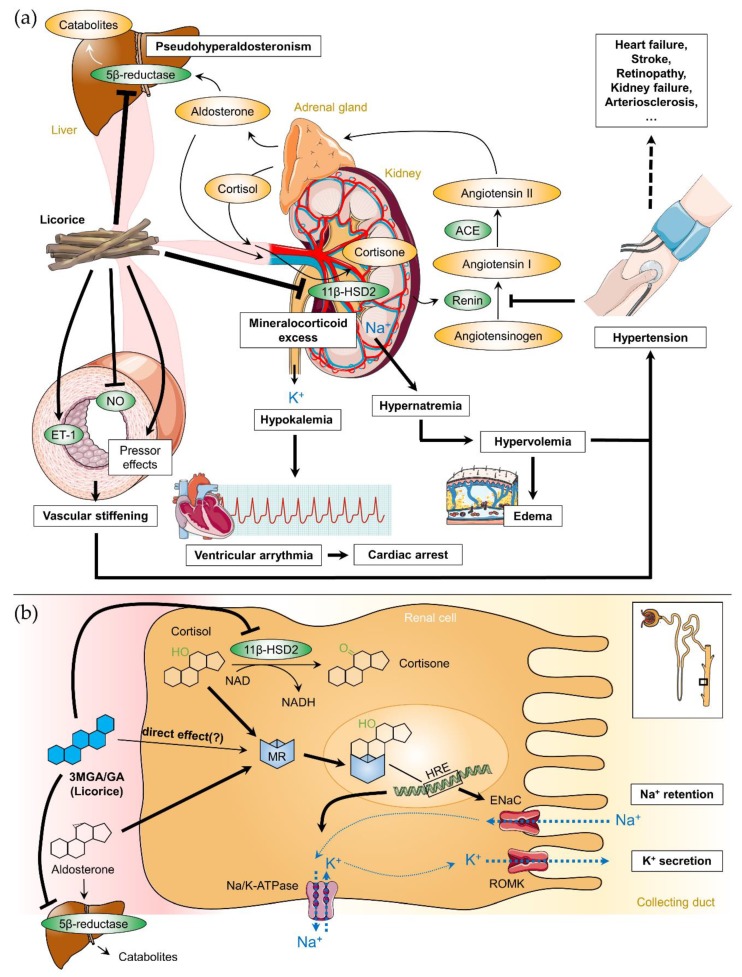Figure 3.
(a) Correlation between licorice intake, the renin-angiotensin-aldosterone-system and licorice-induced adverse effects on the cardiovascular system. (b) Detailed pharmacodynamics of 3β-monoglucuronyl-18β-glycyrrhetinic acid (3MGA) and 18β-glycyrrhetinic acid (GA; blue structure) in the kidney. In addition to a possible direct binding to the mineralocorticoid receptor (MR), 3MGA and GA have inhibiting effects on 11β-hydroxysteroid dehydrogenase type 2 (11β-HSD2) and 5β-reductase. 11β-HSD2 converts cortisol to cortisone; 5β-reductase is involved in the degradation of aldosterone in the liver. Inhibition of both enzymes contributes to apparent mineralocorticoid excess. The insert shows the localization of the processes within the Henle loop. ACE: angiotensin converting enzyme, ENaC: epithelial sodium channel, ET-1: endothelin 1, HRE: hormone response element, NAD(H): nicotinamide adenine dinucleotide, NO: nitric oxide, ROMK: renal outer medullary potassium channel. Parts of the figure were drawn by using pictures from Servier Medical Art (http://smart.servier.com), licensed under a Creative Commons Attribution 3.0 Unported License (https://creativecommons.org/licenses/by/3.0).

